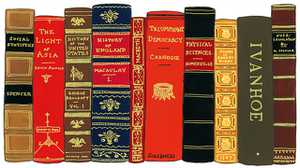Ida B. Wells in Brooklyn
Just 30 years after the Civil War, the Gilded Age, with its emphasis on industrialization and progress, held a special promise for black Americans. Ida B. Wells sought to realize that promise.
By Cori Brosnahan

On October 5, 1892, journalist and activist Ida B. Wells addressed a packed house at New York’s Lyric Hall. The subject was lynching. Wells had recently published an editorial that exposed the lies used to justify the loathsome practice. The white press had long maintained that lynchings were a response to the rape of white women at the hands of black men. After three of Wells’s friends were lynched in Memphis, she began to investigate the circumstances of their murders and of others. She found that the allegations of rape were false; rather, blacks were being lynched for things like registering to vote, starting businesses, or simply refusing to defer to whites in a manner they deemed acceptable. That night at Lyric Hall, Wells was there to share what she had learned.
The lynching editorial was in fact the reason that Wells was living in New York, rather than her home in Memphis, in the first place. Upon its publication, the offices of the Memphis Free Speech, the newspaper Wells co-owned, were destroyed and one of her partners was pistol-whipped. At the time, Wells was traveling, unaware of what was happening at home until she reached New York. Once arrived, she stayed, taking up residence in Brooklyn — at the time, its own city. Despite severe homesickness, she soon became involved in the area’s rich black cultural life.
The Gilded Age, with its emphasis on industrialization and progress, held a special promise for black Americans. Thirty years after the Civil War, they were going to school in record numbers. The illiteracy rate dropped precipitously, making way for a reading community large enough to support some 200 weekly black newspapers across the country. A rapidly growing number of lyceums sponsored lectures, discussions, and formal debates.
“In this period, we begin to see black consciousness being raised,” says historian Paula Giddings, author of Ida, A Sword Among Lions. “Black people are incredibly progressive because they think this enlightenment of society means the end of racism. The stakes are really high.”
It was at one of these lyceums, the Brooklyn Literary Union of the Siloam Presbyterian Church, that Ida debated Maritcha Remond Lyons, an assistant school principal. After the debate — apparently won by Lyons — Wells asked the older woman for public speaking tips. Through Lyons, Wells would be introduced to a circle of extraordinary women — journalists, educators, and reformers — who worked together to improve life for black Americans and women.
“This is a period where black women are moving into the public sphere and having their voices heard in ways that are unprecedented,” says Gidding. “They’re all trying to figure out what is the best, most effective representation. Wells’s anti-lynching campaign is a catalyst for them all coming together on this very important issue.”
Wells’s speech at Lyric Hall was a testament to their efforts. Proceeds from the event made it possible to publish Wells’s editorial as a pamphlet, which she dedicated to the “Afro-American women of New York and Brooklyn.” Wells would continue to spread her message on a lecture circuit, while black women’s groups continued to proliferate. Less than four years later, they would unite as the National Association of Colored Women's Clubs. Reflecting the spirit of self-empowerment and love for one’s community was its motto: “Lifting as we climb.”
Here are some of the women in Ida B. Wells’s Brooklyn circle:

1. Maritcha Remond Lyons
Maritcha Remond Lyons taught in Brooklyn public schools for nearly 50 years. She was born in New York City, where her family’s home served as a stop on the Underground Railroad. After the racially-charged New York City Draft Riots in July of 1863, the Lyons family fled for safer ground. Maritcha’s parents sent her to Providence, Rhode Island, where segregation threatened to interrupt her education; the city had no high school for black students, and she was denied entry to the all-white high school. Lyons, just 16, successfully sued the state, and became the first black student to graduate from Providence High School in 1869.
Upon graduation, Lyons accepted a teaching job in Brooklyn. Over the next five decades, she would become an assistant principal. After helping to plan Ida B. Wells’s powerful anti-lynching testimonial, Lyons and Victoria Earle Matthews founded the Women’s Loyal Union of New York and Brooklyn, a club dedicated to civil rights and social service. Lyons would team up with Matthews again in 1897 to found the White Rose Mission, a shelter for young black, female migrants. The organization operated until 1984.

2. Sarah Garnet
Educator and suffragist Sarah Garnet was the first black female school principal in the New York City public school system. She was born in Brooklyn to a well-to-do family, the eldest of 11 and sister to Susan Smith McKinney, who would become the first black woman in the state of New York to earn a medical degree. She was 14 when she became a teaching assistant in 1845; she retired over 50 years later as a principal.
After her first husband died, Garnet married abolitionist and minister Henry Highland Garnet, who was appointed U.S. Minister to Liberia in 1881, but died two months into his posting. When Ida B. Wells met Garnet, she was living on De Kalb Avenue, where she hosted events like a black art exhibit that Wells reviewed. Garnet also ran a seamstress shop in Brooklyn for nearly 30 years. The shop would become a meeting place for members of the Equal Suffrage League, which she founded in the late 1880s. Garnet, who worked with white suffragists like the wealthy Alva Vanderbilt, was able to draw many black women into the movement. After the National Association of Colored Women Clubs was founded in 1896, she served as superintendent of suffrage.

3. Susan Smith McKinney
In 1870, Susan Smith McKinney became the first black woman in New York state — and the third nationwide — to earn a medical degree. McKinney was born in Brooklyn to successful farmers; her sister was Sarah Garnet, who would become the first black female school principal in the New York City public school system. Initially, she studied music, but ultimately decided to pursue a career in medicine — perhaps inspired by the New York cholera outbreak of 1866 and the death of two of her brothers during the Civil War. She graduated as class valedictorian from the New York Medical College for Women in 1870.
McKinney ran a private practice in her home for 25 years, which was so successful that she opened up another office in Manhattan. Her practice focused on prenatal care and pediatrics, and she treated a diverse group of patients. In 1881, she co-founded the Brooklyn Women's Homeopathic Hospital and Dispensary to serve the black community. She also practiced at the Brooklyn Home for Aged Colored People, where she sat on the board. Active in the social issues of the day, McKinney was a member of the Women's Local Union, founded by Maritcha Lyons and Victoria Earle Matthews, as well as the Equal Suffrage League, founded by her sister.

4. Victoria Earle Matthews
Victoria Earle Matthews was a writer and activist, whose articles and short stories explored black struggle and identity. Matthews was born in 1861 to an enslaved woman and a white man — likely her master. After the Civil War, her mother brought her to New York City, where Matthews worked as a maid, but managed to educate herself in the library of one of her employers. As a young woman, she became a journalist and short story writer, and increasingly dedicated herself to the issues of suffrage and civil rights. It was Matthews who suggested that Ida B. Wells give an anti-lynching testimonial. Afterwards, she worked with Maritcha Lyons to establish the Women’s Loyal Union of New York and Brooklyn.
When Matthews’s only son died at the age of sixteen, she pledged to care for the children of others. She found ample opportunity to do so after an investigation into so-called “employment agents” revealed that the poor, young, black women they lured from the South to the North with the promise of work were really being handed over to brothels. To provide the young women with shelter, education, and services, Matthews teamed up with her friend Maritcha Lyons to found the White Rose Mission in 1897.

5. Ida B. Wells
Journalist and activist Ida B. Wells rose to national attention with her anti-lynching campaign, and spent the rest of her life fighting for the rights of black Americans and women. Wells was born into slavery in Mississippi just a few months before the Emancipation Proclamation. When she was a teenager, both of her parents succumbed to a yellow fever epidemic, leaving Wells in charge of her siblings. She raised them while working as a teacher, eventually moving the family to Memphis, where her aunt lived and the pay was better.
In 1884, Wells was on a train when the conductor demanded she give up her seat in the first-class ladies car and move to the smoking car. When she refused, she was dragged out of the car. Outraged, Wells wrote an article about the incident and successfully sued the Chesapeake & Ohio Railroad Company for violating the 1875 Civil Rights Act. When the railroad company managed to get the verdict reversed, Ida was left disappointed — but determined.
Wells soon began writing articles about race in black newspapers, and bought a share of her own, the Memphis Free Speech, in 1889. When one of her friends as lynched, Wells began an investigation into his killing and others. When she published an editorial on her findings, a mob destroyed the offices of her newspaper and pistol-whipped one of her partners. Wells, who had been traveling at the time, was effectively exiled, and took up residence in Brooklyn and then Chicago. She spent much of her time on the road, traveling throughout the country and in Europe on her anti-lynching campaign. A founding member of the NAACP, she also advocated for suffrage and urban reform.
Published February 2018.








